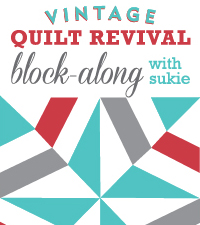This video claims that many vintage sewing machines may be a better value than new ones.
What to look for in a used machine:
Does it have a bobbin case, foot pedal and cord? On most machines, these parts may be the most expensive part to replace.
What happens when you turn it on? Does the hand wheel turn easily? How about zigzag? If it’s a zigzag machine and the needle doesn’t move side to side, that’s not a good sign. How about the wiring. Power cords can be replaced, but many older machines are directly wired to the motor.
Does it have a manual? Most manuals are available online, but expect to pay up to $10 for a replacement.
How does it look? Does it have any dings that indicate it may have been dropped? Lint and dust in the feed teeth and the bobbin area can be easily cleaned. Minor surface blemishes can be cleaned up.
Is it mechanical or computerized? Pass on the computer models and look for mechanical machines.
If everything checks out it will be worth the money to take it to a repair shop and have it serviced. The service for a mechanical machine will cost about $50-80. That cost needs to be figured in when you make your initial purchase. However, if you are handy, there are numerous websites that show you how to repair and service vintage machines.
Beware of the $100 big box store sewing machine. Here’s what a sewing machine repairman once told me. “ the $100 machine is the enemy of the sewer. The Chinese take apart a good machine and fabricate all its parts using plastic. A stylish exterior is designed and they sell them under a respected brand name. Sometimes these machines work, sometimes they don’t. If a part breaks, it is difficult to find repair parts.”
If $100 is your budget limit, shop at yard sales Craigs list and thrift shops until you find a good one. My neighbor recently had a yard sale and offered a vintage Kenmore in a cabinet with lots of sewing feet and accessories for $10. I passed on it because I didn’t have room for the cabinet, but it took will power. I recently picked up a Kenmore at a thrift shop for $20. The man who serviced it said it was a “honey of a machine.” About a month ago I found two Kenmores on the same day. Both were incredibly dirty, but now a re sewing just fine. Who serviced them? me. Purchase price? One was $5, the other was free, but it did not have a foot pedal or power cord. If your budget is a little higher, sewing machine dealers often have trade-ins that have been serviced and carry a limited guarantee.
The website Sew Mama Sew has some great tips for purchasing an older machine.
Now if you come across an Elna Grasshopper, let me know. It’s a Swiss machine that was manufactured in the 40’s to compete with the Singer Featherweight. I love this advertisement photo. It looks like she is hugging it; I understand.





